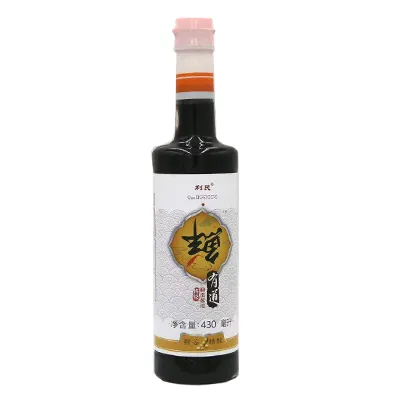
Sushi is a unique art of making food that involves blending simplicity and accuracy, where all and every ingredient are equally important. One of the key constraints needed for sushi is soy sauce. Tuttavia, with a large number of variants like naturally fermented soy sauce, salsa di soia prodotta naturalmente, and black bean soy sauce, how can we differentiate and find the one that goes best with sushi? Stay with us as we dig into the differences and find the perfect partner for your next sushi meal.
Soy sauce is more than a mere salty dip. Its deeply flavored tanginess actually improves the raw fish and rice flavors in sushi. Tuttavia, different soy sauces offer different qualities. Here are the main three types:
Salsa di soia a fermentazione naturale
Naturally fermented soy sauce is produced using traditional fermentation techniques. This type of soy sauce typically undergoes a natural aging process for several months using a mixture of soybeans, grano, acqua, e sale. The fermentation process allows enzymes to break down proteins into amino acids, producing a complex, mellow, and rounded flavor with a delicate aroma.
This type of soy sauce is often seen as the purest form, with no added chemicals or artificial flavors. It offers a well-balanced taste that complements the subtle flavors of sushi without overpowering them.
Salsa di soia a fermentazione naturale
Naturally brewed soy sauce is quite similar to naturally fermented soy sauce, but it may include controlled brewing methods that speed up the fermentation process while still maintaining natural ingredients. It is brewed with soybeans, grano, e acqua, offering a slightly lighter taste and color.
This type of soy sauce provides a clean, crisp, and slightly salty flavor that works well with sushi, especially when paired with lighter fish like flounder, snapper, or halibut.
Salsa di soia ai fagioli neri
Black bean soy sauce is a unique variation made from fermented black beans, also known as “douchi” in Chinese cuisine. It delivers a darker color, thicker consistency, and a rich, intense flavor profile with hints of sweetness and earthiness.
While black bean soy sauce is perfect for stir-fries, brace, and dipping cooked meats, it may be too bold for sushi. Its deep umami flavor can mask the delicate taste of raw fish and vinegared rice, making it less suitable for traditional sushi pairings.
Which One Should You Choose for Sushi?
When it comes to sushi, subtlety is key. The best soy sauce should enhance the natural flavors of the fish and rice without dominating them. Based on the characteristics above:
- Naturally fermented soy sauce is the top choice for sushi lovers. Its mellow, rich, and umami-packed flavor enhances the taste of sushi in the most authentic and balanced way.
- Naturally brewed soy sauce comes in second, offering a lighter alternative that works beautifully with white fish and vegetarian sushi options.
- Black bean soy sauce is best saved for cooked dishes or fusion-style sushi that can handle bolder flavors.
The Verdict
If you’re aiming for a traditional and refined sushi experience, choose salsa di soia a fermentazione naturale. Its depth, aroma, and well-rounded umami perfectly match the clean, delicate flavors of fresh sushi. For those who prefer a lighter taste or wish to experiment, salsa di soia prodotta naturalmente is also a great option.
Avoid using salsa di soia di fagioli neri with sushi unless you’re intentionally creating a bold fusion dish that requires a more pronounced, earthy soy sauce character.

